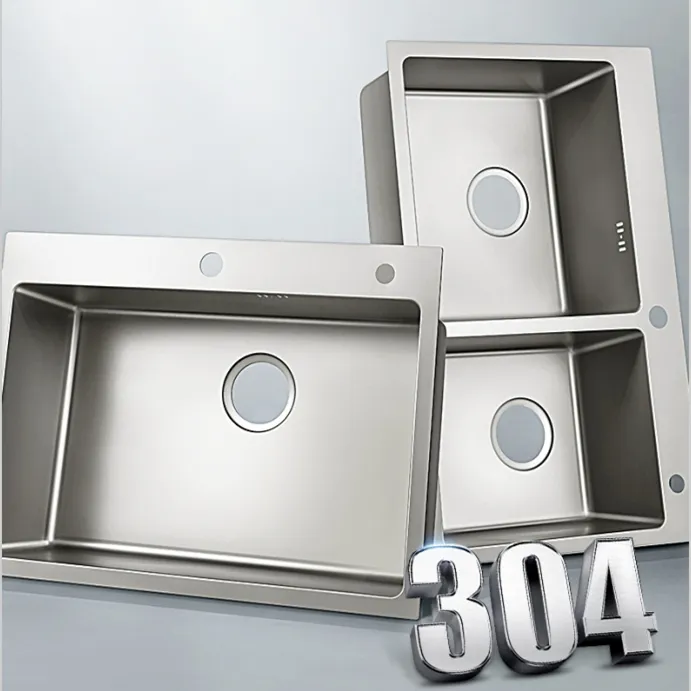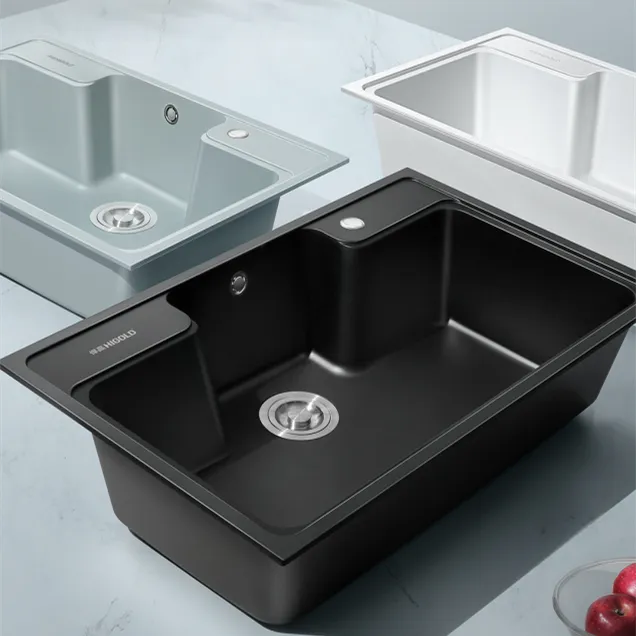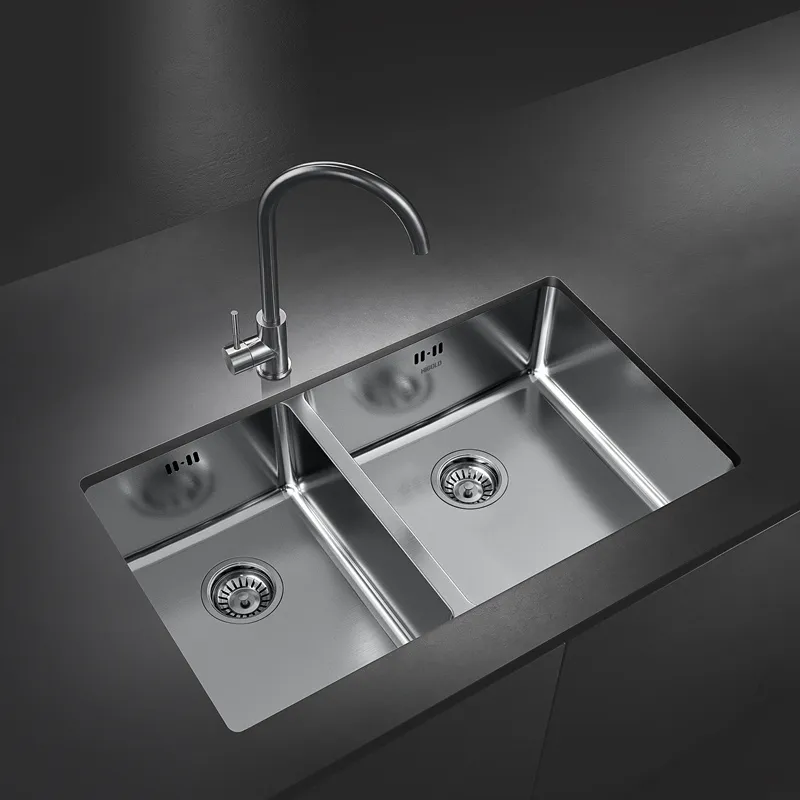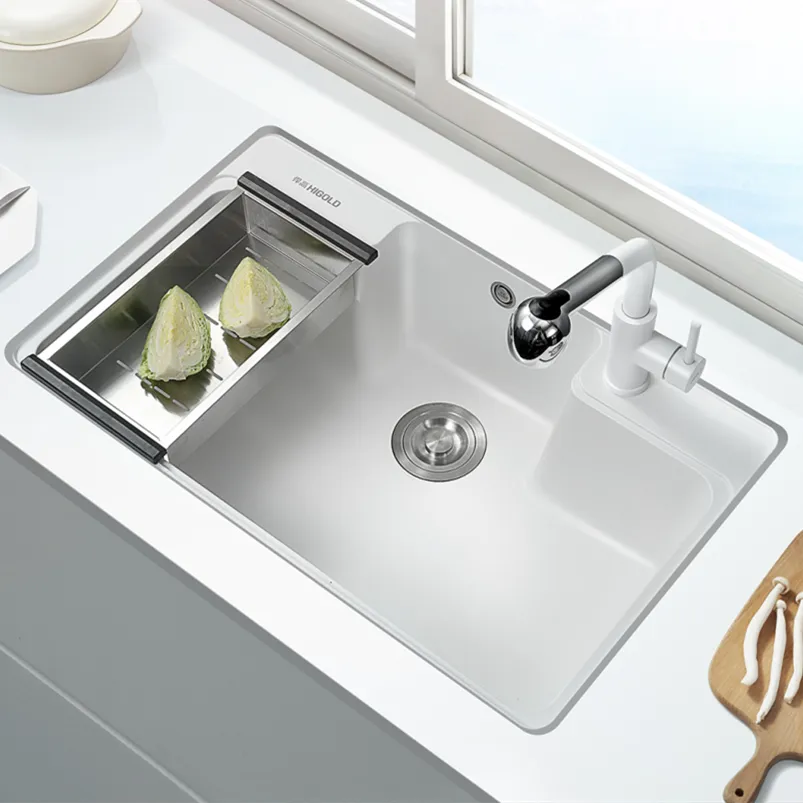The kitchen sink is an essential fixture in modern kitchens. With rising living standards, people are increasingly prioritizing the quality and aesthetics of their sinks when renovating their kitchens. A kitchen sink is more than just a tool for washing vegetables and dishes; its material, design, and functionality significantly impact the overall kitchen decor, ease of use, and maintenance requirements.
When choosing a kitchen sink, consumers face a variety of material options. Sinks made from different materials have varying prices, durability, appearance, and maintenance requirements. In addition to common materials like stainless steel, ceramic, and stone, there are also some more exotic and high-end materials on the market, often priced higher than standard sinks. These high-end kitchen sinks are often preferred by some consumers due to their unique aesthetics, durability, and design.
This article will delve into the most expensive kitchen sink materials on the market, analyzing their characteristics, advantages, application scenarios, and why they are considered the most expensive sink materials on the market.

Are common kitchen sink materials not enough?
Before exploring the most expensive sink materials, it's important to first understand the common sink materials. Common kitchen sink materials include:
1. Stainless Steel Sinks
Stainless steel sinks are the most common kitchen sink material on the market. Stainless steel sinks are the preferred choice for many households due to their excellent corrosion resistance, high temperature resistance, ease of cleaning, and relatively low cost. Their moderate price puts them within the affordable range of most households.
2. Ceramic Sinks
Ceramic sinks typically feature a white, glossy finish, giving them a clean, classic feel. While not as durable or stain-resistant as stainless steel, ceramic sinks offer a very attractive appearance and are well-suited to traditional or vintage-style kitchens. While slightly more expensive than stainless steel, ceramic sinks are still mid-range.
3. Composite Quartz Sinks
Composite quartz sinks are made from a blend of natural quartz particles and resin, offering high durability, scratch resistance, and stain resistance. They look similar to stone but are more affordable. While slightly more expensive than stainless steel and ceramic sinks, they are popular among consumers due to their aesthetic and durability.
4. Natural Stone Sinks
Natural stone sinks, such as granite, sandstone, and marble, are generally more expensive due to their natural texture and durability. Natural stone sinks offer unparalleled beauty and unique natural grain, but they tend to be more expensive.

What are the most expensive kitchen sink materials?
In addition to the common materials listed above, there are also some high-end, luxury kitchen sink materials that often cost significantly more than standard sinks. The following sink materials are considered the most expensive options.
1. Copper Sinks
Copper sinks are one of the most expensive sink materials on the market. Copper has been a popular material since ancient times, offering an elegant, classic look that develops a beautiful natural patina over time, making it particularly well-suited to modern country or traditional kitchens.
The high price of copper sinks is primarily due to the high raw material cost and complex processing required for copper as a metal. Copper sinks have excellent antibacterial properties, making them a natural advantage in terms of hygiene. Furthermore, copper sinks are extremely durable and can withstand prolonged use and wear. However, copper sinks require regular care and cleaning to maintain their appearance, as they are prone to oxidation and discoloration.
2. Copper Alloy Stainless Steel Sinks
Copper alloy stainless steel sinks combine the durability of stainless steel with the aesthetic appeal of copper. These sinks blend the classic look of copper with the modern performance of stainless steel, offering high corrosion resistance and a unique metallic sheen. Copper alloy stainless steel sinks are generally more expensive than pure stainless steel sinks due to the higher cost of the alloy and the more complex craftsmanship. These sinks offer a more personalized look and are particularly well-suited to modern or industrial kitchens.
3. Marble Sinks
Marble sinks are another expensive sink option. As a natural stone, marble has a noble and luxurious appearance, leading to a high price tag. The advantage of marble sinks lies in their exceptional aesthetic, with unique veins and colors that can add an artistic touch to a kitchen space. However, marble is a relatively fragile material that is easily damaged and scratched, so care must be taken when handling it.
The higher price of marble sinks is primarily due to the scarcity of natural stone and the difficulty of machining it. Compared to other sink types, marble sinks are more difficult to maintain and are susceptible to corrosion from acidic or alkaline substances, requiring regular protective treatment.
4. Granite Sinks
Granite sinks are considered the pinnacle of high-end kitchen sinks. Granite is a hard and durable natural stone, often used in luxurious kitchen sinks. Granite sinks offer excellent scratch and stain resistance and are aesthetically pleasing. Each granite sink has a unique texture, adding a natural, luxurious feel to any kitchen.
The high price of granite sinks stems from the high cost of the material itself and the complex manufacturing process. Granite sinks require high-temperature processing to form and are relatively heavy, requiring specialized installation techniques. Furthermore, while granite sinks are very strong, they can be damaged by heavy objects if accidentally dropped.
5. Agate Sinks
Agate sinks are one of the most luxurious and expensive sink options on the market. Agate is a beautiful gemstone, and sinks made from it are not only visually stunning but also extremely hard and durable. Agate sinks are typically meticulously carved from natural or artificial agate, boasting rich textures and colors, adding a touch of luxury to the kitchen. Due to agate's rarity and unique processing difficulty, agate sinks can cost tens or even hundreds of thousands of yuan.
While agate sinks are incredibly beautiful and durable, the unique nature of the material makes them expensive to maintain, heavy, and extremely expensive. They are only found in a very select few high-end luxury homes or custom kitchens.

What Factors Affect Kitchen Sink Prices?
In addition to the scarcity and production difficulty of the material itself, several other factors influence the price of a kitchen sink.
1. Sink Design and Craftsmanship
The design and craftsmanship of a kitchen sink significantly impact its price. Some high-end sinks are custom-designed, requiring hand-carving or specialized finishing by artisans. These sinks command significantly higher prices than mass-produced, standardized sinks. For example, the meticulous craftsmanship and unique design of handcrafted copper, marble, or granite sinks significantly increase their price.
2. Sink Size and Shape
A sink's size and shape also affect its price. Large sinks or sinks with special features (such as double bowls or designs with multiple openings) are generally more expensive than regular-sized sinks. Custom-sized sinks, in particular, are more difficult to produce and therefore naturally command a higher price.
3. Brand and Market Positioning
Kitchen sinks from well-known brands often command higher prices due to their brand premium. High-end sinks from brands like Higold, Blanco, and Franke are priced not only to reflect the materials and features of the sink itself, but also the added value of the brand. These brands often offer higher quality standards, innovative designs, and superior after-sales service.

Does Higold provide installation guides with its products?
Yes, each product comes with installation instructions, and digital versions are available for retailers or online sellers to share with customers. This helps end-users easily install products, improving satisfaction and reducing after-sales support costs for buyers.


